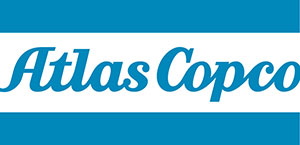1. How would you describe the market in which you conduct your business?
In spite of a generally low level of capital investments, we can say that this year we had good demand for small- and medium-sized compressors, vacuum solutions, industrial tools and assembly systems. Our service business is growing stronger and stronger. We are focusing on creating value for customers while keeping a close eye on efficiency.
Atlas Copco introduced this year several innovative products, including high-performance oil-injected screw compressors, efficient bolt tensioning tools, a speedy surface drill rig for construction applications and small quarries, and an intelligent monitoring system for road construction equipment.
Innovation is in our DNA, and we are committed to offering break-through solutions that help customers become more productive. The Group always strives to create value for customers and deliver higher productivity, smarter ergonomics, enhanced safety and improved energy efficiency.
Continuing to keep our promises for sustainable productivity for our clients’ businesses, we expect our business to grow with 2 digits in 2016.
2. From your perspective, how have the exports and the domestic consumption evolved? Have you had any surprises compared with the initial forecasts? Please detail.
The Romanian economy was, for more than a year, on an increasing trend, the economic and fiscal policies contributing to the consolidation of this trend. The official forecasts show an increase of Romanian GDP in the following two years and, as producers of B2B equipment for strategic industries, we can confirm the increasing appetite. Atlas Copco Romania has budgeted for this year an even higher increase than the one budgeted at the group level. The increase is determined not only by our offer, but mainly by the market demand, which is recovering and diversifying and thus brings internal and external consumption. For example, in Romania, the equipment demand for the automotive industry is augmented this year by other heavy industries, like shipyards.
3. Atlas Copco supports several key industries, such as the food industry, automotive and the oil & gas industry. The economic signs differ from sector to sector (the food industry was supported by the VAT cut, the automotive industry seems to be the beneficiary of more favorable credit conditions, while oil & gas deals with the decrease of the international prices). What are your forecasts for the next years in these industries?
Romania's food and beverage sector will be a regional outperformer over the next five years, driven by an improving labor market, real wage growth and low levels of inflation. The VAT cut on food products from June 2015 provided an additional boost to the sector, with further investment to come as the sector consolidates.
As for the automotive industry, we have forecasted a 14.9% increase in vehicle sales in 2015 on the back of a recovery in the passenger car and commercial vehicle segments. Growing consumer sentiment started translating into an uptick in big-ticket purchases, such as new autos, following a period of reticence from consumers (when reduction of GDP determined people to delay car purchases and weak access to credit determined many businesses to reduce investment). In 2016, we expect to see robust growth in the auto market, as improvements in private consumption translate into improved auto sales.
When it comes to the oil & gas industry, field redevelopments will pop up oil and gas production in 2016, with longer-term growth driven by Black Sea projects. The downstream sector continues to modernize but downsize in order to remain competitive.
4. As an export market destination, do you think that the eurozone is out of the financial turbulences now? Please detail.
The main downside risk arises from the potential for further reversals in the euro zone, especially if Greece were to leave it, as Romania would be directly and indirectly exposed. Anemic growth in the euro zone, heightened risk of a sovereign debt crisis and/ or continued deleveraging by EU banks (which own 82% of banking assets in Romania, including 12% under Greek ownership) would have a negative impact on business and consumer confidence and on economic growth.
2015 was a year in which the unpredictable played a major role, but the reality from the markets in which we operate makes us agree with the European Commissioner Pierre Moscovici, who recently stated that the economic growth in the eurozone will be 1.5% for this year.
5. What have you learnt from the crisis and what lessons learnt do you apply now? What lessons were you not able to apply after the crisis and why?
Romania’s recovery from recession in 2009-10 was modest, with real GDP growth having averaged 1.7% per year in 2011-13, but growth came in at 2.8% in 2014 and has gained momentum in the first half of 2015. We forecast a pick-up in eurozone growth to 1.5% in 2015, which should allow Romania’s economy to continue to expand in the coming months. Meanwhile, consumer and business confidence indicators, together with recent high-frequency data, point to a pronounced pick-up in domestic demand.
Romania recorded one of the fastest growth rates in the EU, in both year-on-year and quarter-on-quarter terms, in the first quarter of 2015.
6. If you were to describe the industry outlook for 2016, which 5 keywords would you use? Please detail.
Atlas Copco is a world leader in providing industrial solutions that increase sustainable productivity, so that the first keyword that defines us and our operations on all 180 markets is sustainability. Productivity is the second and comes together with efficiency. Innovation is another keyword, which in our opinion, should define the industrial perspectives for 2016 and the last, but not least, responsibility in all economic activities, not just in one industry or another.
No matter the industry, these are the most important benchmarks for a long-term business, without negative social impact.





























